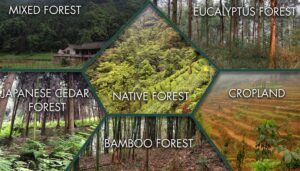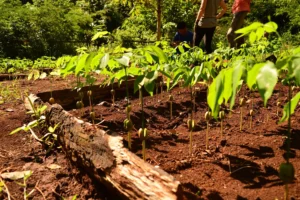
Reforestation is becoming increasingly vital as the world grapples with deforestation, climate change, and biodiversity loss. Traditional methods of planting trees are proving inadequate to meet the urgent demands of global forest restoration. However, the advent of technology is ushering in innovative reforestation methods that promise to enhance the efficiency and effectiveness of these efforts. This article explores how technology is transforming global forest restoration, offering new tools and techniques to address environmental challenges.
1. Drones: The New Frontier in Reforestation
Drones are revolutionizing reforestation by enabling large-scale planting operations that were previously impractical. Equipped with seed pods, drones can cover extensive areas of deforested land in a fraction of the time it would take using traditional methods. These drones can fire seed pods containing a mix of seeds, nutrients, and growth stimulants into the soil, promoting rapid forest regeneration. The precision and efficiency of drones make them an invaluable tool for reforestation projects, especially in remote or difficult-to-access areas.
2. Satellite Imaging and GIS: Mapping the Future of Forests
Satellite imaging and Geographic Information Systems (GIS) are crucial for assessing the current state of forests and planning restoration efforts. High-resolution satellite imagery provides detailed information about deforestation rates, forest cover, and land use changes. GIS technology allows researchers to analyze this data, identify priority areas for reforestation, and monitor the progress of restoration projects. By integrating satellite data with GIS, conservationists can make informed decisions and tailor their strategies to local conditions.
3. Artificial Intelligence: Enhancing Planting Strategies
Artificial Intelligence (AI) is playing a transformative role in reforestation by optimizing planting strategies and predicting forest growth. AI algorithms can analyze vast amounts of data, such as soil conditions, weather patterns, and plant species requirements, to recommend the best planting techniques. Machine learning models also help forecast the long-term impacts of reforestation efforts, enabling more effective planning and resource allocation. AI-driven insights support more precise and targeted interventions, leading to better outcomes in forest restoration.
4. Genetic Engineering: Creating Resilient Forests
Genetic engineering is advancing the development of tree species that are more resilient to environmental stresses. By modifying the DNA of certain tree species, scientists can create varieties that are better adapted to changing climates, pests, and diseases. These genetically modified trees have the potential to enhance reforestation efforts by increasing the survival and growth rates of planted forests. However, this approach raises ethical and ecological questions that need to be carefully considered.
5. Biomimicry: Learning from Nature
Biomimicry involves designing solutions based on the principles found in nature. In the context of reforestation, this means developing technologies and methods inspired by natural processes. For example, researchers are studying the seed dispersal mechanisms of various plants to create more effective seed dispersal systems. By emulating nature’s strategies, biomimicry can lead to innovative approaches that enhance the success of reforestation projects.
6. Community Involvement and Technology Integration
Technology alone cannot achieve successful reforestation; community involvement is equally crucial. Digital platforms and mobile applications are enabling local communities to participate actively in forest restoration efforts. These tools facilitate communication, provide training resources, and allow for real-time data sharing. By empowering local stakeholders with technology, reforestation projects can achieve greater engagement and sustainability.
7. The Role of Public-Private Partnerships
Public-private partnerships are essential for advancing innovative reforestation methods. Collaborations between governments, NGOs, and private companies leverage resources, expertise, and technology to scale up restoration efforts. These partnerships often lead to the development of cutting-edge solutions and the implementation of large-scale reforestation projects. Successful examples include joint ventures focused on drone-based planting and AI-driven forest management.
8. Future Trends and Challenges
As technology continues to evolve, new trends in reforestation are likely to emerge. Advances in biotechnology, robotics, and remote sensing will further enhance restoration capabilities. However, challenges such as data privacy, technological accessibility, and the potential ecological impact of some technologies need to be addressed. Balancing innovation with ecological and ethical considerations will be key to the future success of reforestation initiatives.
Conclusion
The integration of technology into reforestation efforts marks a significant shift in how we approach forest restoration. Drones, satellite imaging, AI, genetic engineering, and biomimicry are transforming the landscape of reforestation, offering new solutions to old problems. By embracing these innovative methods and fostering collaboration between stakeholders, we can enhance global forest restoration efforts and work towards a more sustainable future.


